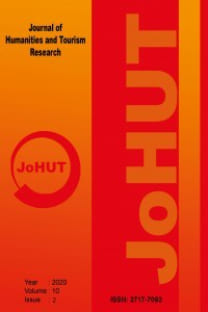Evaluation of the Sous Vide Technique in terms of Quality and Safety
Emerging sensibilities in consumption have increased the importance of food safety and quality in food production. The techniques preferred during the food production stage should intend to ensure food safety in all processing, cooking and preservation phases, thus enabling the quality to be maintained at a maximum level. The purpose of this study is to evaluate the sous vide technique in terms of food safety and quality. Existing studies in the literature refer to sous vide as a technique that is effective and integrated with all stages of food processing, cooking and preservation. The main objective of the technique is to minimize the risk of oxidation by means of transferring food into vacuum-sealed packages after necessary preparations are made and by cooking the food at a constant temperature so as to increase microbiological quality as well as preserve its shelf life and sensory properties. The results of the analysis of different types of food show that the food cooked and preserved by the sous vide technique completely preserves their sensory properties. Another fact the results revealed is that the extracts added during the processing phase of the food create a rich taste. On the other hand, the technique lowers oxidation risk in food, which in turn extends their shelf life and microbiological quality. With the abovementioned features, the sous vide technique is preferable in terms of efficient stock management and sustainability
___
- Aran, N. (2001). The effect of calcium and sodium lactates on growth from spores of Bacillus cereus and Clostridium perfringens in a ‘sous-vide’beef goulash under temperature abuse. International journal of food microbiology, 63(1-2), 117-123.
- Armstrong, G. A., & McIlveen, H. (2000). Effects of prolonged storage on the sensory quality and consumer acceptance of sous vide meat-based recipe dishes. Food Quality and Preference, 11(5), 377-385.
- Aung, M. M., & Chang, Y. S. (2014). Traceability in a food supply chain: Safety and quality perspectives. Food control, 39, 172-184.
- Baldwin, D. E. (2012). Sous vide cooking: A review. International Journal of Gastronomy and Food Science, 1(1), 15-30.
- Bongiorno, T., Tulli, F., Comi, G., Sensidoni, A., Andyanto, D., & Iacumin, L. (2018). Sous vide cook-chill mussel (Mytilus galloprovincialis): evaluation of chemical, microbiological and sensory quality during chilled storage (3 C). LWT- Food Science and Technology, 91, 117-124.
- Botonaki, A., Polymeros, K., Tsakiridou, E. & Mattas K. , (2006). The role of food quality certification on consumers' food choices, British Food Journal, Vol. 108 Issue: 2, pp.77-90.
- Caswell, J. A., Bredahl, M. E., & Hooker, N. H. (1998). How quality management metasystems are affecting the food industry. Review of agricultural economics, 20(2), 547-557.
- Ceylan, Z., & Şengör, G. F. Ü. (2017). Sous vide teknolojisi ile muamele edilen balıkların kalite parametrelerinin incelenmesi. Aquatic sciences and engineering, 32(1), 8-20.
- Church, I. J., & Parsons, A. L. (2000). The sensory quality of chicken and potato products prepared using cook–chill and sous vide methods. International journal of food science and technology, 35(2), 155-162.
- Creed, P. G., & Reeve, W. (1998). Principles and applications of sous vide processed foods. In . In: Ghazala, S. (Ed.), Sous Vide and Cook–Chill Processing for the Food Industry. Gaithersburg, MD., USA: Aspen Publishers Inc.
- ISSN: 2717-7092
- Başlangıç: 2010
- Yayıncı: Karabük Üniversitesi
Sayıdaki Diğer Makaleler
Mohammad M. ALIA, Nayef J. JOMAA, Kamariah YUNUS
Öğretmenlerin Öz Yeterliklerinin Politik Becerilerine Etkisi
Veysel SÜMER, Ayşe İpek KOCA BALLI
Turizm Fakültesi Öğrencilerinin Bireysel İnovasyon Algılarının Bölüm Memnuniyetine Etkisi
Hüseyin KELEŞ, Kevser ÇINAR, Halil AKMEŞE
Üniversite Öğrencilerinin Destinasyon İmajı Algısı: Sinop İli Örneği Üniversite Öğrencileri
Trabzonspor Futbol Takımının Medyada Konumlandırılışı: Trabzon Örneği
Karayolu Tehlikeli Madde Taşımacılığı Kapsamında Tünel Güvenliği ve Risk Analizi
Lise Öğrencilerinde Dijital Oyun Bağımlılığı Üzerine Bir Alan Araştırması: Uşak Örneği
